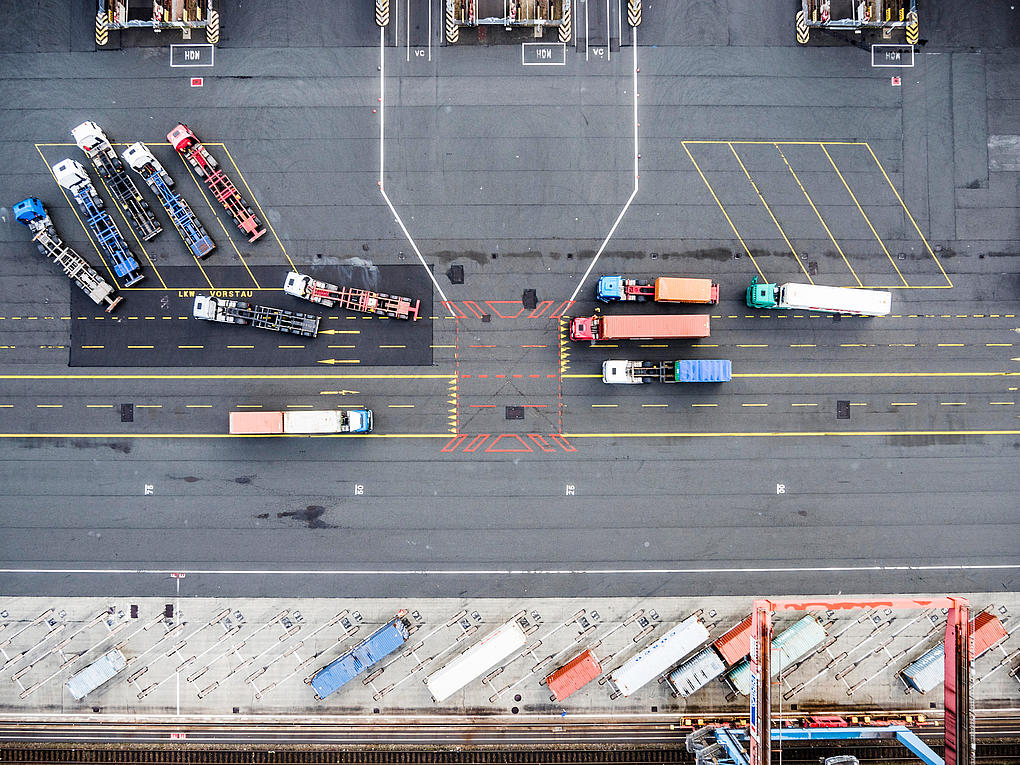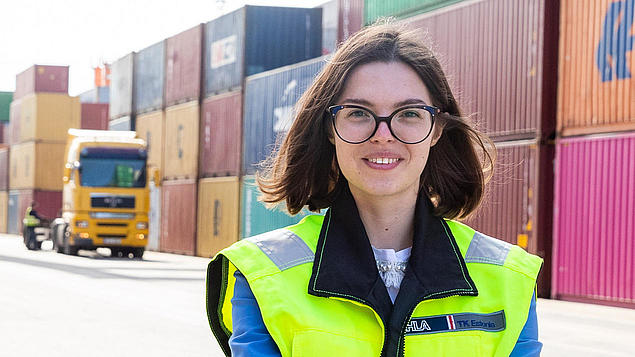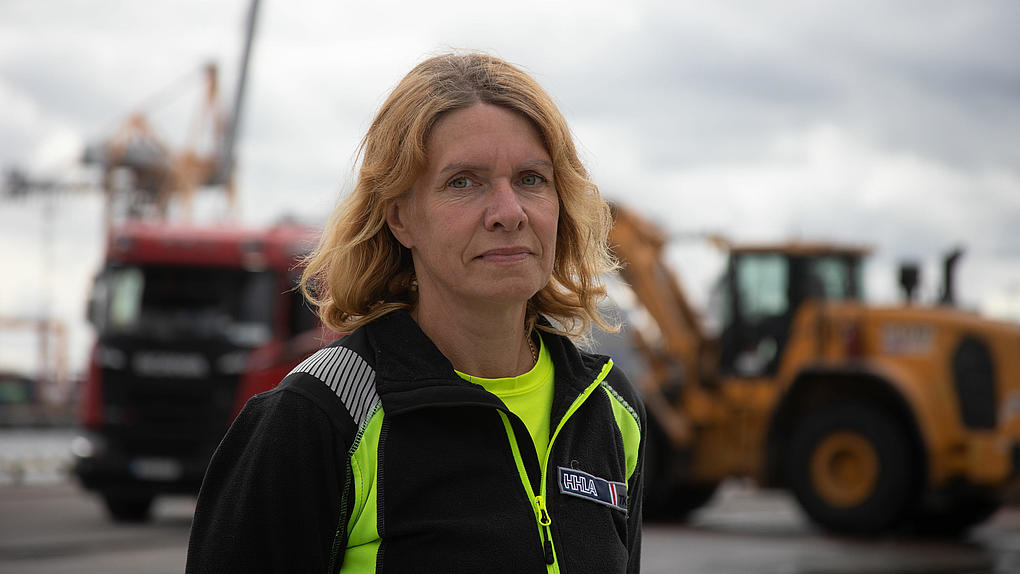
Estonia, one of the three Baltic states at the northern end of Europe, has done it. Thanks to considerable media coverage, the country is regarded as a digitalisation pioneer, even by those who have never been there. This is also confirmed by the Digital Economy and Society Index (DESI) of the European Commission. DESI ranks Estonia first in the EU for digital public services. This can be experienced in the capital city Tallinn.


Tallinn knows how to convey to its visitors a feeling of modernity and innovation. A belt of gleaming tower blocks, housing an above-average number of start-ups, has formed around the historic centre of the old Hanseatic city.
A good example is the business district of Ülemiste. Here, the digital information centre e-estonia operates a showroom. A KFC (the American fast-food chicken restaurant) delivery vehicle is located in front of the entrance. It is unusual as it does not have a driver's cab. It doesn't need one either, as it is self-driven. It was developed by the Estonian company AuveTech, which not only builds delivery vehicles – its shuttle already transports small groups of passengers.
Test field for completely new solutions
Companies like these benefit from investing in Estonia. Carmen Raal, Digital Transformation Adviser at e-estonia explains, “Estonia is the first European country to allow autonomous driving. We are delighted to be the testing ground for new solutions and want to attract many young enterprises for this.”
An existing law was simply creatively interpreted to allow autonomous driving. Carmen Raal smiles charmingly,“The law states that every vehicle must by controlled by a driver, but not that the driver has to be sitting in the vehicle!”

“Estonia is the first European country to allow autonomous driving.”

Munich-based start-up FERNRIDE, in which HHLA Next has an investment, is focused on Estonia. Since 2023, semi-autonomous tractors are driving around the HHLA TK Estonia terminal at the port of Muuga near Tallinn.In the first phase, the vehicle is remote-controlled; in winter 2023, the first vehicle will move partially autonomously. And there are more to come…

On the road from teleoperation to full automation
Which route will trucks take into the mobility of the future?
Read moreThe universal port of Muuga, located on the north-eastern edge of Europe, is not yet known to everyone in the logistics industry. "We want to offer a better and more flexible service than the others," says Riia Sillave. She is CEO of the multifunctional terminal HHLA TK Estonia, which has been in existence for over 30 years and has been part of the HHLA Group since 2018. For her, one of the ways to achieve this is rapid digitalization. "Here at the terminal, we want to shape development in a similar way to how Estonia managed it after independence - from analog directly into the age of fiber optic cable. We are also skipping a few stages of development, which gives us a head start."


The relatively small Estonian terminal is actually already marching ahead of larger facilities. One indication of this are the brand new self-service terminals at the barriers to the gate. HHLA TK Estonia previously manually controlled the containers passing through. That was too time consuming and led to queues forming. Julia Metslov realised that automating the entrance and exit at the container terminal would be very helpful to customers. The young and enthusiastic Head of Customer Service therefore launched a project and it look less than a year before all the processes were digitalised. Read more about the new solution.

Registration with the number plate
Container truckers no longer need to disembark at the gate and receive all the information about their delivery on screen or in print. Soon they will receive the information by text message. Drivers transporting general and bulk goods will also no longer need any paper or checks at the gate, reports Operations Manager Toomas Uibokant. This process is somewhat more complex than that with the containers. Each steel box has a unique number that can be read using special image recognition (OCR). This is not the case for the dumper truck that is about to pick up gravel from the terminal. It has a number plate, but how is its cargo recorded?
Toomas Uibokant stands at the gate and demonstrates that there is already a working solution to this problem. Yes, the barrier lifts after the camera has transferred the image of the license plate to the system. After the fully automatic weighing, the result is recorded in the system and the loading process can begin. When leaving the terminal with a full load, the gate does not open again until the truck has been weighed again.

Boss of the big engines
Even as a child, Liivikas rode along on her father's dump truck, and her playground was the gravel pit nearby. Today, she works at the Estonian port of Muuga and likes to switch to even bigger equipment.
Read moreSome signatures on paper cannot be replaced
This registration and checking system works throughout the entire Port Community System of the port of Muuga. The outer entrances to the site are also integrated in the gate operating system and automatically open their barriers for the reported transport. This is possible within Estonia, which takes a pragmatic and digital approach. In the realm of international freight transport, such solutions come up against sometimes insurmountable hurdles. “There are still business partners that have to confirm the acceptance of freight with a signature on paper,” Riia Sillave says regretfully. One senses that the enterprising CEO of the terminal would like to take the next big step.

There have been attempts to display container data worldwide using blockchain technology, and of course HHLA TK Estonia has been involved. However, it has not yet been possible to reconcile the interests of all players involved in the transport chain. "Transparent data transfer would make the service much faster. But as long as there are data protection hurdles, there are limits to what we can do in the port," summarizes Sillave. This is of course merely an incentive for the HHLA TK Estonia team. Where else are you going to find a digital solution, if not in Estonia?


